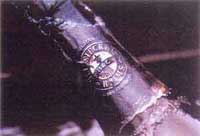Revenue and Expense
Revenue net of interest expense on a fully taxable-equivalent basis rose 60 percent to $33.1 billion compared with $20.7 billion a year ago.
Net interest income on a fully taxable-equivalent basis rose 9 percent to $11.9 billion from $10.9 billion in the second quarter of 2008 due to an improved rate environment and the addition of Countrywide and Merrill Lynch. These improvements were partially offset by a shift in loan mix and the sale of securities. Net interest yield narrowed 28 basis points to 2.64 percent due to the addition of lower yielding assets from Countrywide and Merrill Lynch, sales of securities, and a shift in loan mix, partially offset by the favorable rate environment.
Noninterest income rose to $21.1 billion from $9.8 billion a year earlier. Higher mortgage banking income, trading account profits and investment and brokerage services income reflected the addition of Merrill Lynch and Countrywide. Additionally, the increase was driven by a $5.3 billion pretax gain on the sale of CCB shares. Bank of America continues to own approximately 11 percent of the common shares of CCB. Noninterest income in the period also included a $3.8 billion pretax gain from the completed sale of the merchant processing business to a joint venture. These increases were partially offset by $3.6 billion in losses related to mark-to-market adjustments including the Merrill Lynch structured notes as a result of narrowing credit spreads during the quarter. Card income declined due to higher credit losses on securitized credit card loans and lower fee income.
Noninterest expense increased to $17.0 billion from $9.7 billion a year earlier. This reflects higher personnel and general operating expenses, driven in part by the Merrill Lynch and Countrywide acquisitions and the FDIC special assessment. Pretax merger and restructuring charges rose to $829 million from $212 million a year earlier.
The efficiency ratio on a fully taxable-equivalent basis was 51.44 percent compared with 46.60 percent a year earlier.
Pretax, pre-provision income on a fully-taxable equivalent basis was $16.1 billion compared with $11.1 billion a year earlier.
Credit Quality
Credit quality deteriorated further as the economic environment weakened. Consumers remained under significant stress as unemployment and underemployment increased and individuals spent longer periods without work. These conditions led to higher losses in almost all consumer portfolios compared with the prior quarter.
Declining home values and reduced spending by consumers and businesses negatively impacted the commercial portfolios resulting in broad-based increases in criticized and nonperforming loans. Commercial loan losses rose from the prior quarter as commercial domestic and small business portfolios were impacted in sectors dependent on discretionary consumer spending. Losses in the commercial real estate portfolio also increased.
The provision for credit losses was $13.4 billion, flat with the first quarter. Credit losses were higher than the prior quarter and reserves, which were increased by $4.7 billion, were added across most consumer portfolios and the commercial portfolio reflecting the impact of the weak economy. Nonperforming assets were $31.0 billion compared with $25.6 billion at March 31, 2009, reflecting the continued deterioration in economic conditions. The 2009 coverage ratios and amounts shown in the following table include Merrill Lynch.
Credit Quality
(Dollars in millions) Q2 2009 Q1 2009 Q2 2008
--------------------- ------- ------- -------
Provision for credit
losses $13,375 $13,380 $5,830
Net Charge-offs 8,701 6,942 3,619
Net Charge-off
ratios(1) 3.64% 2.85% 1.67%
Total managed net
losses $11,684 $9,124 $5,262
Total managed net
loss ratio(1) 4.42% 3.40% 2.16%
At 6/30/09 At 3/31/09 At 6/30/08
---------- ---------- ----------
Nonperforming assets $30,982 $25,632 $9,749
Nonperforming
assets ratio(2) 3.31% 2.64% 1.13%
Allowance for loan
and lease losses $33,785 $29,048 $17,130
Allowance for
loan and lease
losses ratio(3) 3.61% 3.00% 1.98%
(1) Net charge-off/loss ratios are calculated as annualized held net
charge-offs or managed net losses divided by average outstanding
held or managed loans and leases during the period.
(2) Nonperforming assets ratios are calculated as nonperforming assets
divided by outstanding loans, leases and foreclosed properties at
the end of the period.
(3) Allowance for loan and lease losses ratios are calculated as
allowance for loan and leases losses divided by loans and leases
outstanding at the end of the period.
Note: Ratios do not include loans measured at fair value in accordance
with SFAS 159.
Capital Management
Total shareholders' equity was $255.2 billion at June 30. Period-end assets were $2.3 trillion. The Tier 1 Capital ratio was 11.93 percent, up from 10.09 percent at March 31, 2009 and from 8.25 percent a year ago. The Tier 1 Common ratio was 6.90 percent, compared with 4.49 percent at March 31, 2009 and 4.78 percent at June 30, 2008. The Tangible Common Equity ratio was 4.67 percent, up from 3.13 percent at March 31, 2009 and 3.24 percent a year earlier. Tangible book value per share of common stock was $11.66, compared with $10.88 at March 31, 2009 and $11.87 a year earlier.
During the quarter the bank increased its Tier 1 common capital by nearly $40 billion, easily exceeding the $33.9 billion Supervisory Capital Assessment Program (SCAP) buffer set by the Federal Reserve in May. Actions contributing toward that goal during the quarter included: issuing shares of common stock; exchanging certain non-government preferred stock for common stock; the sale of a portion of shares in CCB; and the sale of the company's merchant processing business to a joint venture.
During the quarter, Bank of America issued 1.25 billion, or $13.5 billion, of common shares. Bank of America exchanged the equivalent of $14.8 billion of non-government preferred shares for approximately 1 billion shares of common stock through private exchanges and a tender offer. A cash dividend of $0.01 per common share was paid. The company recorded $1.4 billion in preferred dividends, partially offset by $576 million related to the exchange of preferred stock in the calculation of net income available to common shareholders. Period-end common shares issued and outstanding were 8.65 billion for the second quarter of 2009, 6.40 billion for the first quarter of 2009 and 4.45 billion for the year-ago quarter.



